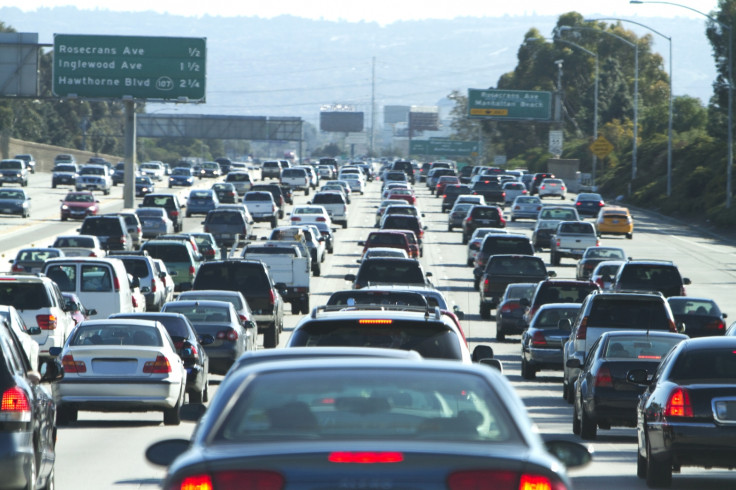California wants to solve energy crisis by turning roads into electricity-producing 'crystal highways'
Renewable energy initiative harnessing daily traffic gets $2m backing.

The cars crammed on the lanes of California's highways could be the unexpected answer to helping create a renewable power source as scientists have come up with a brainwave to harness the mechanical energy from the thronging traffic.
Using piezoelectric crystals embedded into the asphalt, the California Energy Commission is hoping cars can create electricity by compressing the crystals as they drive over them. The technology has been given $2m (£1.5m) backing to fund the project and small tests will begin in order to see whether the idea could produce enough energy to become a viable option.
The state of California has a target to produce 50% of its electricity via renewables by 2030 and is expected to hit 25% by the end of 2016. Large solar farms and the improvement in solar technology is currently a favourite form of renewable energy but the lure to harness power from all those moving vehicles is just too tempting for researchers.
"It's not hard to see the opportunity in California," said Mike Gravely, the commission's deputy division chief of energy research and development. "It's an energy that's created but is just currently lost in vibration."
But however tempting the idea is, ultimately the technology may be its sticking point. Some believe the crystals may be too fragile to withstand the high volumes of traffic and would have to be replaced far too often to be a cost effective option.
As noted by phys.org similar projects in Tokyo, Italy and Israel have either failed or been dropped. However, it was the innovation in these projects that spurred Los Angeles politician Mike Gatto to propose the idea to the energy commission.
Other road-worthy energy initiatives around the world include a solar-powered project in France where streets are being paved with photovoltaic panels to produce electricity for nearby homes. The plan is to lay 1,00km of solar road in a neat scheme that allows cars to drive over them while helping to delivering a renewable energy solution.
© Copyright IBTimes 2025. All rights reserved.






















